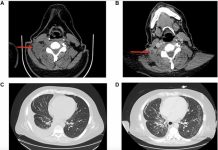According to The Lancet, antimicrobial resistance (AMR) is now a leading cause of death worldwide – higher than HIV/AIDS or malaria
Through an analysis of 204 counties and territories, researchers find that hundreds of thousands of deaths now occur due to previously treatable infections, because the bacteria that cause them having become resistant to treatment.
AMR occurs when bacteria, viruses, fungi and parasites change and evolve over time so they no longer respond to the medicines designed to treat them. AMR makes infections harder to treat and increases the risk of disease spread, severe illness and death.
Conditions such as lower respiratory and bloodstream infections have now become even more dangerous due to AMR.
Combatting Antimicrobial Resistance (AMR)
This new report has illustrated an urgent need to scale up actions to combat AMR whilst outlining the actions policymakers needs to be making to save lives and protect health systems.
Immediate action needs to be taken to combat AMR. The Lancet study lists these as the top actions for governments and policymakers to take, optimising the use of existing antibiotics, taking greater action to monitor and control infection, and provide more funding to develop new antibiotics and treatments.
Co-author Professor Chris Murray said: “The new data reveals the true scale of antimicrobial resistance worldwide, and is a clear signal that we must act now to combat the threat.”
“Previous estimates had predicted 10 million annual deaths from antimicrobial resistance by 2050, but we now know for certain that we are already far closer to that figure than we thought. We need to leverage this data to course-correct action and drive innovation if we want to stay ahead in the race against antimicrobial resistance.”
The dangers of AMR
AMR has been discussed in health debates around the world for a number of years, with the first reported account of bacteria resistant to penicillin being reported as early as 1940. And in 2019 it was declared by the World Health Organisation that AMR is one of the top 10 global public health threats facing humanity.
There have been several studies published from several countries and regions however until now there has been no estimate that has covered all locations and a broad range of pathogens and drug combinations.
GRAM – the new Global Research on Antimicrobial Resistance report estimates deaths linked to 23 pathogens and 88 pathogen-drug combinations in 204 countries and territories in 2019.
How many people died because of AMR?
Using 471 million individual records obtained from systematic literature reviews, hospital systems, surveillance systems, and other data sources, statistical modelling was used to produce estimates of the impact of AMR in all locations – including those with no data.
The results of the study showed that AMR has been directly responsible for an estimated 1.27 million deaths worldwide, and associated with an estimated 4.95 million deaths, in 2019. HIV/AIDS and malaria have been estimated to have caused 860,000 and 640,000 deaths, respectively, in 2019.
“Improving collection of data is essential” to stop AMR
“With resistance varying so substantially by country and region, improving the collection of data worldwide is essential to help us better track levels of resistance and equip clinicians and policymakers with the information they need to address the most pressing challenges posed by antimicrobial resistance” said study co-author Prof Christiane Dolecek.
The authors acknowledge some limitations to their study, in combining and standardising data from a wide variety of sources also led to some potential sources of bias, including misclassification of community- or hospital-acquired infections, and inconsistency in the distinction between drug resistant and susceptible infections.
There is also the potential for selection bias in passive surveillance systems, and hospital microbial data from Global South countries may skew towards more urban populations or more severe disease.
“We identified serious data gaps in many low-income countries, emphasising a particular need to increase laboratory capacity and data collection in these locations.”











